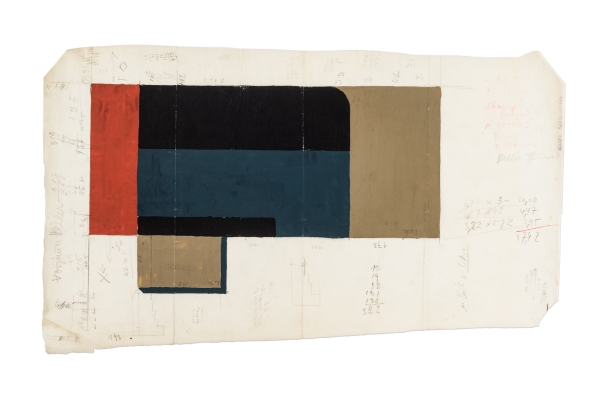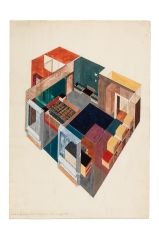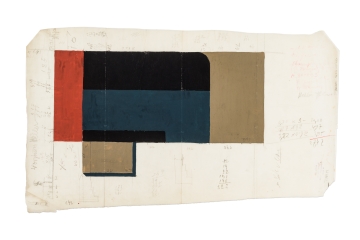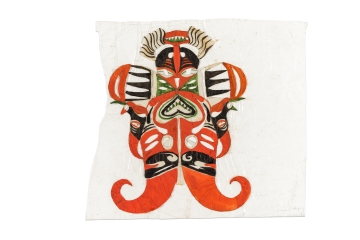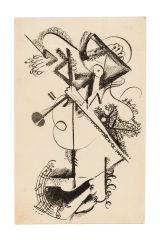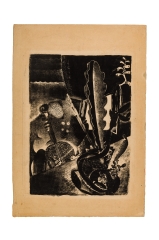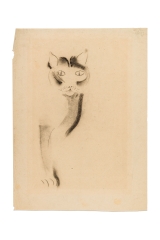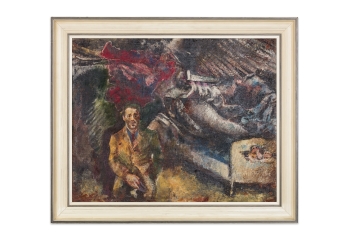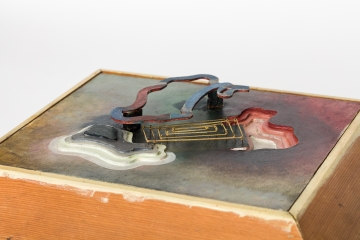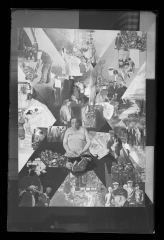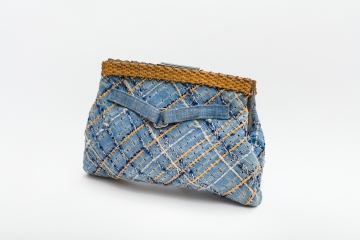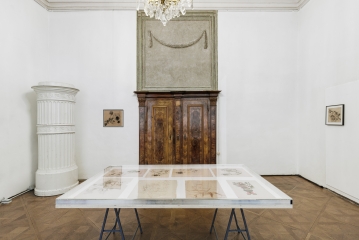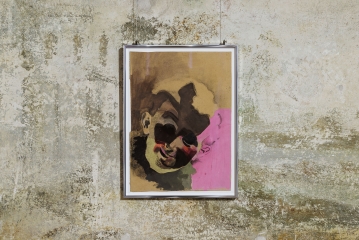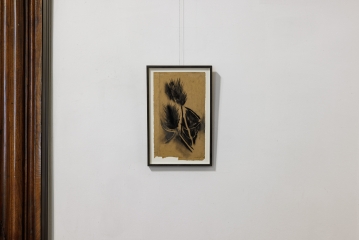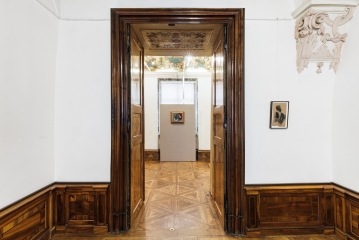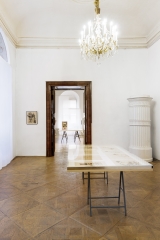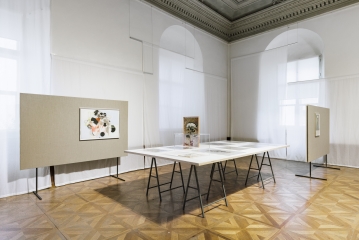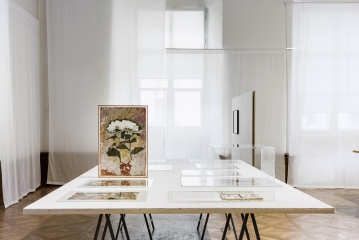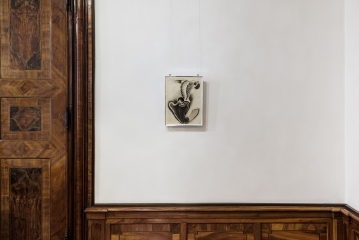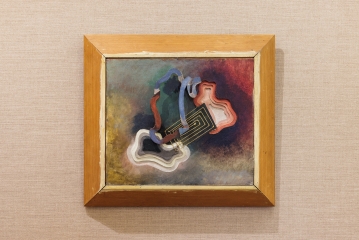Vienna
Art WeekThe artistic work of Friedl Dicker-Brandeis (1898-1944) is marked by production across media,
ranging from graphics and paintings to designs for costumes and stage sets, toys, interiors and modular furniture, through
fabrics, bags, and book covers to politically engaged art. Throughout her short career she also worked as an art teacher –
a practice she pursued even after she was deported to the concentration camp Terezín and up until her murder at Auschwitz
in 1944. Dicker’s oeuvre emerges from her on-going professional engagement with a variety of environments and collaborations.
Its complexity distinguishes her as an outstanding artist; however, she also belongs to a generation of women artists still
only present at the margins of the received history of European Modernism.
There
are various reasons for Dicker’s neglect and the prevailing reading of Dicker as merely the partner of the architect Franz
Singer. Her gender, class, and ethnic identity have played just as large a role in this process of marginalization as has
the material destruction of central parts of her rich architectural oeuvre – a destruction itself contingent upon her oppression
as a socialist and her persecution as a Jew under the rise of fascism and the National Socialist regime. Still today, the
engagement with her oeuvre requires to be continued.
The tendency of 20th-century art history to
uphold a separation of genres and of media as well as the segregation of the visual and the applied arts have certainly complicated
attempts to classify and interpret Dicker's interdisciplinary oeuvre. The transgression of established categories is already
reflected in the artist’s early work. In naming their first company “Werkstätten bildender Kunst GmbH” (Workshops for Visual
Arts), Dicker and Singer articulated an understanding of their cross-genre multimedia artistic production as visual arts and
material labor for social life as a whole. The exhibition takes up this observation. Based on works from the collection of
the University of Applied Arts Vienna, the show explores the material, formal and thematic versatility of Dicker’s artistic
production and thereby aims to deepen and differentiate the perspectives on the artist’s oeuvre. It not only addresses the
artist’s diverse working methods and their political contexts but also makes visible the intellectual and artistic milieus
with which she was associated. To this end, the exhibition sheds light on her multifaceted education at institutions such
as the Wiener Graphische Versuchs- und Lehranstalt, the Wiener Kunstgewerbeschule, and the Weimar Bauhaus. It reconstructs
her diverse personal networks reaching far beyond the art field, and traces her own engagement with contemporary developments
in art and theory. Friedl Dicker-Brandeis thus becomes visible as a figure who, despite her precarious living and production
conditions as a jewish, socialist woman from the lower middle class, elaborated versatile, unusual and resistive art works
for many different communities and contexts.
The exhibition furthermore explores a collection that
includes works from all important phases of the artist’s work. It is closely connected to the engagement of Oswald Oberhuber,
who as an artist, curator and rector of the University of Applied Arts Vienna was committed to the re-establishment of avant-garde
artists and figures of the Austrian cultural landscape who had been murdered, displaced and marginalized by fascism. He presented
the artist for the first time in his exhibition Österreichs Avantgarde 1900 - 1938. Ein unbekannter Aspekt (Austrian Avant-garde
1900 - 1938. An unfamiliar aspect) at Galerie nächst St Stephan in 1976 as well as in the show Die Vertreibung des Geistigen
aus Österreich. Zur Kulturpolitik des Nationalsozialismus in 1985. Georg Schrom and Stefanie Trauttmansdorff continued
his engagement with their exhibition 2 x Bauhaus in Wien. Franz Singer, Friedl Dicker (2 x Bauhaus in Vienna. Franz
Singer, Friedl Dicker) at the former School of Applied Arts Vienna in 1988/89.
Friedl Dicker-Brandeis.
Workshops for Visual Arts is related to a two-year research project whose results will be published in English and German
with de Gruyter in 2022. The monograph
Friedl Dicker-Brandeis. Works from the Collection of the University of Applied
Arts Vienna, edited by Stefanie Kitzberger, Cosima Rainer and Linda Schädler will be presented as part of the Vienna
Art Week on November 22, 2022 and can be ordered
here,
via our
e-mail address and at book shops and online worldwide.
In spring 2023, the exhibition will be shown at Graphische Sammlung ETH Zurich.
Friedl Dicker-Brandeis:
Book Presentation and Discussion
22. November 2022, 16:00 - 20:00
Vordere Zollamtsstraße 7, Auditorium,
1030 Wien
In the context of the Vienna Art Week and the exhibition Friedl Dicker-Brandeis. Workshops for Visual
Arts at University Gallery Heiligenkreuzerhof, the institute Collection and Archive presents a bilingual monograph on the
artist. The book documents for the first time a body of artistic works collected at the university since the 1980s and traces
the disciplinary and thematic versatility of Dicker-Brandeis’s work.
The publication includes several essays, which situate
Friedl Dicker-Brandeis' work within social, political, and aesthetic discourses of the 1920s and 1930s, as well as shorter
texts, which explore further selected works.
The book presentation will be accompanied by statements by the authors
and two panel discussions.
Stefanie Kitzberger, Cosima Rainer, Linda Schädler (eds.)
Friedl Dicker-Brandeis.
Werke aus der Sammlung der Universität für angewandte Kunst Wien, Berlin/Boston:
De Gruyter (Edition Angewandte), 2023.
Friedl Dicker-Brandeis. Works from the Collection of the University of Applied Arts Vienna, Berlin/Boston:
De Gruyter
(Edition Angewandte), 2023.
With texts by Laura Egger-Karlegger, Stefanie Kitzberger, Eva Marie Klimpel, Katharina Hövelmann,
Julie M. Johnson, Bernadette Reinhold, Cosima Rainer, Robin Rehm, Christian Scherrer, Noemi Scherrer, Hamida Sivac, Daniela
Stöppel, Mark Wigley
PROGRAM
4.00-4.05 pm: Welcome, Gerald Bast, Rector University of Applied
Arts Vienna
4.05-4.10 pm: Welcome, Linda Schädler, Director Graphische Sammlung ETH Zürich
4.10-4.20 pm: Welcome
and introduction, Cosima Rainer, Director Collection and Archive, University of
Applied Arts Vienna (in German)
4.20-4.30
pm: Presentation of the publication, Stefanie Kitzberger, University of Applied Arts Vienna (in
German)
Break
(10 min)
Friedl Dicker-Brandeis‘ Modernismus situieren. Künstlerische Strategien, Kontexte und Netzwerke
(in
German)
4.40-4.55 pm: Daniela Stöppel, LMU Munich
4.55-5.10 pm: Robin Rehm, ETH Zürich
5.10-5.25
pm: Hamida Sivac, University of Vienna
5.25-6.10 pm: Panel discussion with questions from the audience, moderated by
Jenni Tischer, University
of Applied Arts Vienna
Break (10 min)
Conditions and Methods
of Production and Reception. Perspectives on Gender, Class and Anti-Semitism
(in English)
6.20-6.35 pm:
Julie M. Johnson, The University of Texas, San Antonio
6.35-6.50 pm: Bernadette Reinhold, University of Applied Arts
Vienna
6.50-7.05 pm: Mark Wigley, Columbia University, GSAPP, New York
7.05-7.20 pm: Stefanie Kitzberger, University
of Applied Arts Vienna
7.20-8.05 pm: Panel discussion with questions from the audience, moderated by Daniela Hammer-Tugendhat,
University of Applied Arts Vienna
Drinks




